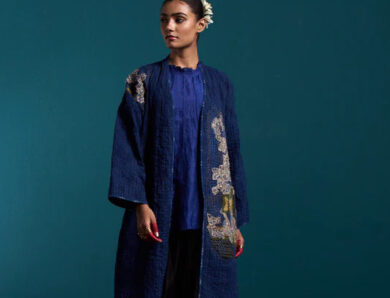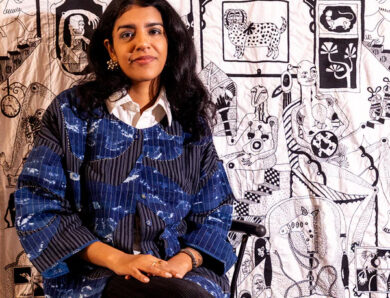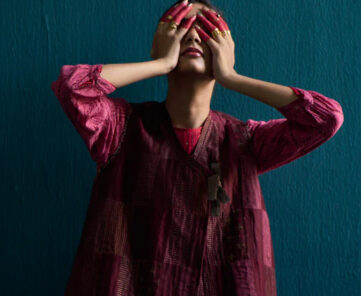BTB Speaks to
Indigene Crafts
Jaya Bhatt and Ruchi Tripathi of Indigene Crafts nurture timeless traditions with artisans, creating a legacy of handcrafted beauty and meaningful connections.
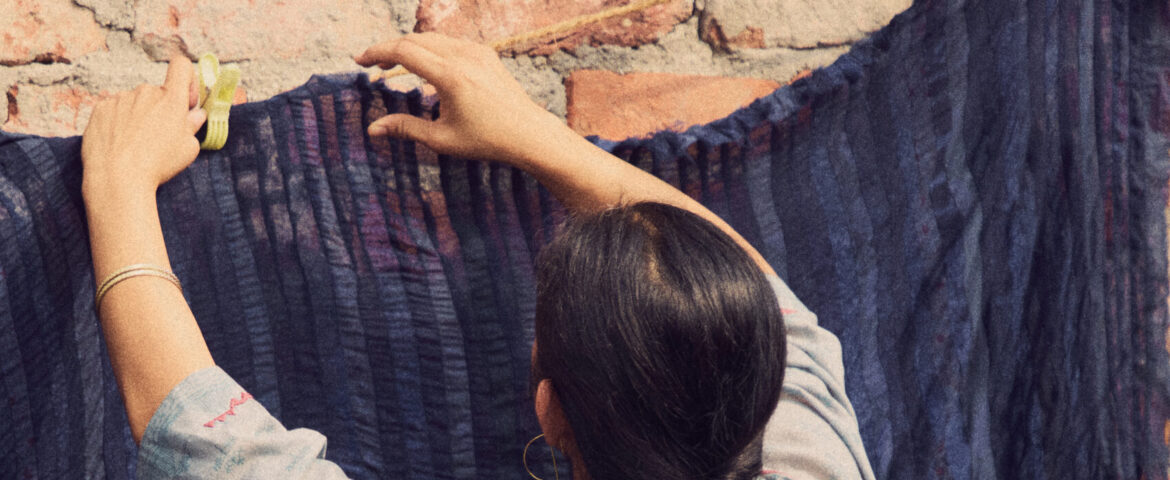
Written by: Manica Pathak
Even with over a decade of market presence, Jaya Bhatt and Ruchi Tripathi of Indigene Crafts are far from touting their success. Instead, “Indigene is just a drop in the ocean.” states Jaya humbly. Long before the term 'homegrown' entered the mainstream vocabulary, both the founders, precisely 14 years ago, were working closely with crafts groups and clusters for the modern market. Today, the brand takes utmost pride in its partnership with artisans and local communities. Each piece that is created passes through many hands across different regions—all whilst maintaining an ethical supply chain. “As we work together, the artisans refine their skills through practice, and our one-on-one interactions strengthen the relationship. Often, we learn from them too,” says Jaya. From their studio in Delhi, the founders’ conversation with Blur The Border promises to be both insightful and engaging. Yet, it’s their light-hearted demeanours and a strong understanding of the importance of building relationships—not just with their artisans, but also with the customers— that leap through the screen. “We don’t use chatbots on our website. It’s usually one of us personally responding to customer queries, which creates a more meaningful experience. It allows us to explain our products in detail, making customers more aware of what goes into creating them,” emphasizes Ruchi.
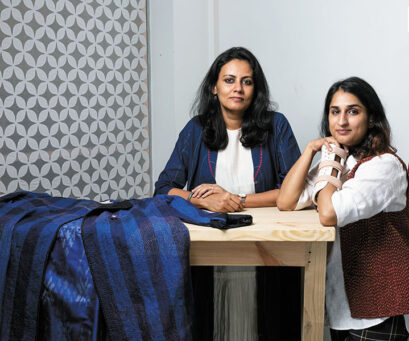
Jaya Bhatt & Ruchi Tripathi (Founders of Indigene Crafts)

The industry's reality is currently tugging between preserving cultural heritage and artisans’ striving for economic progress. However, Jaya quickly redirects this viewpoint, “The issue of migration and the loss of traditional crafts is a much larger question. Rural economies are collapsing, and you can’t blame artisans for wanting a better life. Everyone is aspirational now. They want to move to towns and cities, educate their children, and improve their quality of life. For instance, a weaver might be happier that his son becomes an engineer rather than continuing in weaving. That’s the reality we’re facing.” Ruchi delves deeper into the shift, “What often happens is that larger enterprises or buying houses expect standardization—1,000 identical pieces, for example. But ‘handmade’ is still a very niche segment, and we need to accept that. It can’t be highly scalable. We can’t expect to produce volumes and volumes of handcrafted products,” she asserts and elaborates on the collective efforts that demand attention, “Industries need to be more sensitive and accepting of the so-called "defects" in handcrafted goods. These are not flaws—they’re unique aspects of the craft that make each piece special. We try to do what we can, but everything is so market-driven now that it’s incredibly challenging. You constantly have to be on your toes to attract customers so that the work we do with artisans continues. While we can’t solve these larger societal shifts, we can focus on nurturing a market and an audience for these crafts. The support of audiences and customers is crucial—they need to appreciate and value what we create. That’s the toughest part.” This pragmatism and sense of groundedness have shaped Indigene’s journey in some of the most profound ways. “As long as there is demand and appreciation, these skills and traditions have a chance to survive. And if we can play a small role in sustaining that, I think it’s a job well done,” adds Jaya.
“You can’t just walk into an artisan’s village and say, “Make this for me.” It doesn’t work that way. It’s the artisans’ craft, their skill, and you’re essentially seeking to collaborate with them. When we explore new crafts, it involves a lot of groundwork—that process takes time. We’re approaching them with our ideas and concepts, not the other way around. So, it’s important for us to be more accepting and adaptable to their ways rather than expecting them to adjust to ours.”
This cognition, Among the many milestones—ranging from editorial features in leading magazines to runway shows like Lakme Fashion Week—these relationships have also led to valuable learnings, particularly in re-evaluating the dynamics between designers, brands, and artisans. “We need to adapt to them, and in turn, they need to adopt us,” remarks Jaya, emphasising that the process is symbiotic, one of co-creation and mutual understanding. “You can’t just walk into an artisan’s village and say, “Make this for me.” It doesn’t work that way. It’s the artisans’ craft, their skill, and you’re essentially seeking to collaborate with them. When we explore new crafts, it involves a lot of groundwork—that process takes time. We’re approaching them with our ideas and concepts, not the other way around. So, it’s important for us to be more accepting and adaptable to their ways rather than expecting them to adjust to ours.”

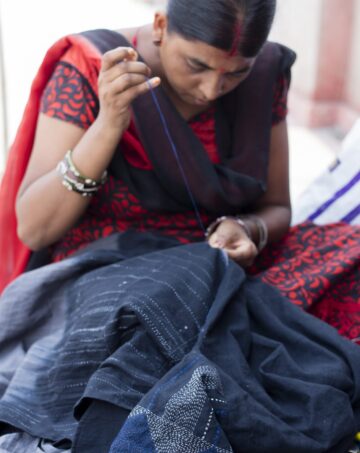
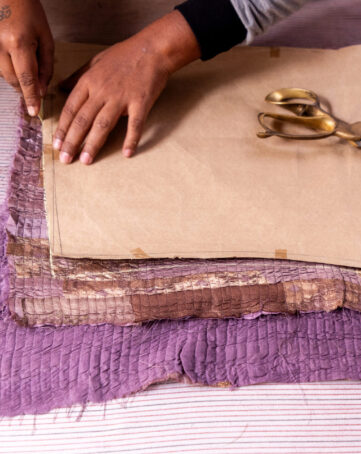
With a gamut of traditional crafts explored—including Ajrakh, Dabu, Sujni, Ikat and Kalamkari— and collaborations with various artisan clusters, the inner workings involved are anything but a one-size-fits-all approach. "Hand block printing and natural dyeing have been passed down through generations, and working with artisans means finding a balance between tradition and new ideas. With Ajrak, which usually features intricate motifs in indigo, red, black, and white, we experimented with a more open, minimal aesthetic and introduced colors like aubergine and mocha—something that hadn’t really been done before." highlights Ruchi, hinting that co-creating with the artisans can create harmony between the past and the present—honouring tradition but also making room for modern interpretations. She continues ”In contrast, with embroidery artisans—most of whom are women—the process is a bit different. Many of them are already skilled in needlecraft, but they might require technical training to learn new stitches or refine forgotten ones. For instance, Kantha artisans are often used to running stitches, but we sometimes reintroduce other traditional stitches that they may not have practised in years. It’s as much about reminding them of their heritage as it is about combining those techniques into contemporary designs.”
Even upcycling forms an important part of Indigene’s design philosophy. Their Relove collection, which launched in 2017, continues to thrive, recently showcased to a live audience at the Open Art Project. Ruchi notes, “The response was fantastic. People were excited to see how each piece had its own story, and we provided a complete experience for the audience. The display walked them through the process of creating Relove—from sorting and patchworking to layering and garment construction.” By honoring discarded textiles with the same reverence as new designs, Indigene ensures that every artisan's work is preserved, underscoring that the brand’s true success lies not just in its products, but in the community it has fostered over time. "It’s not just about design—it’s about a social and emotional connection. That’s what builds trust over time. The producers are truly the backbone of Indigene. If they decided not to work with us, we wouldn’t have anything." Jaya concludes
